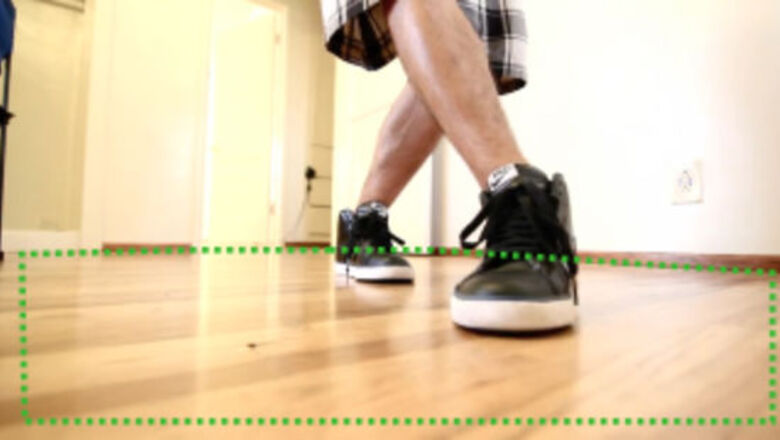
views
Get the Basics
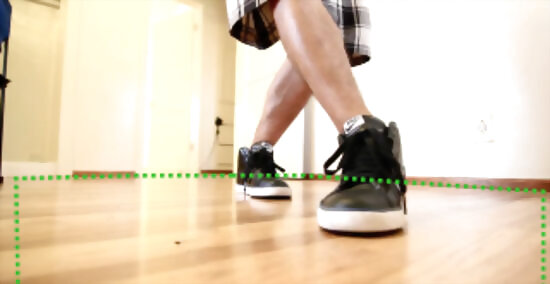
Seek out an open tile, linoleum, or hardwood surface. You can also use a large piece of cardboard on any hard surface like concrete. The main idea is that you'll be able to slide easily around the surface of the material.
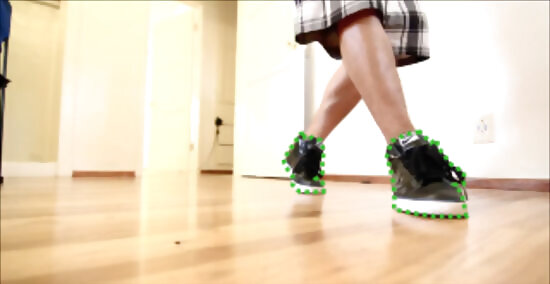
Put on athletic shoes. Breakdancing is truly a sport that requires physical exertion and athletic moves. Make sure to wear comfortable shoes.
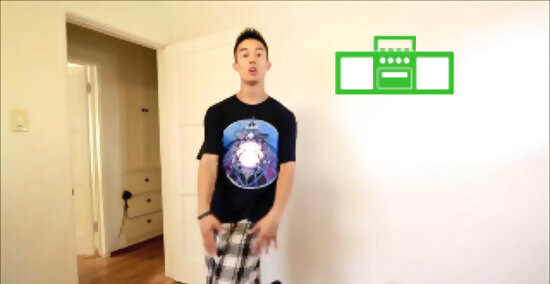
Choose your hip hop beats. Pick music with an upbeat, steady rhythm and a flow that you can feel. The most important aspect of the music is that you feel inspired and energized by it.
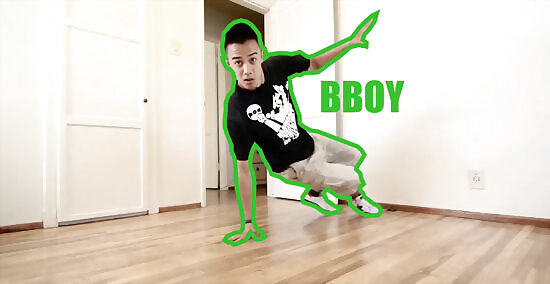
Know the basic terminology. One of the first things any boy should learn is the difference between "breakdancing" and "Bboying". Bboying is the first term made to describe the dance; it's usually the term used when in the community. The term "breakdancing" was invented by the mainstream media in the 1980s to market the dance. Recently, serious performers have tried to reclaim the name "Bboying" for their performance. The dance is called B-boying whether the performer is male or female. But when describing a certain individual, there's Bboy (male breaker) and B-girl (female breaker). All breakers have a nickname, such as Bboy Darkness, Bboy Cloud, etc. At first, this shouldn't be too important, but it is in the long run when you want to gain a better hold of who you are as a dancer and gain recognition in your community.
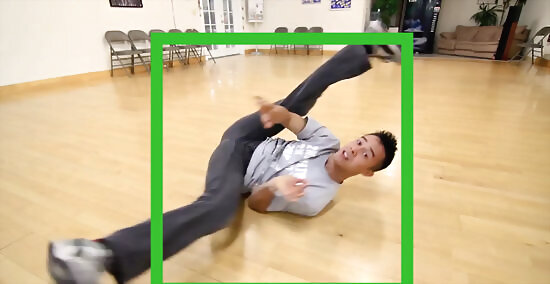
Know the term "teched." Teched in the breakdancing world means varied. It is used to describe the six- or four-step movements a performer is doing on the ground. When a B-boy's movements are heavily "teched," they are very complex and distinct.
Learn the Toprock
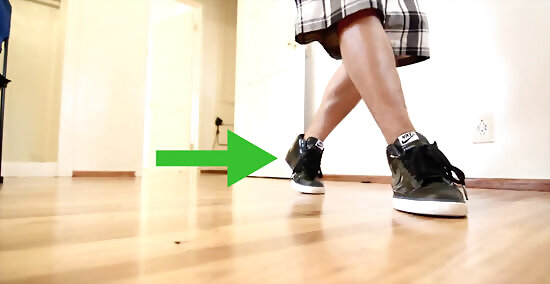
Practice the toprock. This is the portion of the dance that you will complete standing up before you hit the ground and start stepping and spinning.
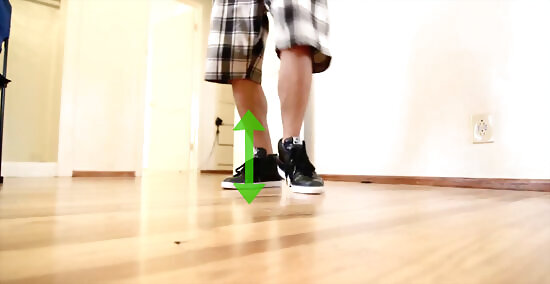
Stand on your tip toes and begin to bounce lightly. You want to be light on your feet and be able to quickly change directions and bounce up and down.
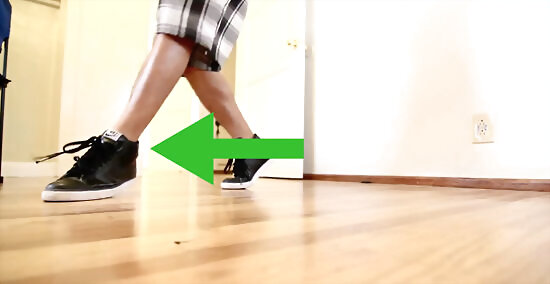
Cross your left leg over and in front of your right leg. Stay light on your feet while you perform the crossover move. You don't have to use your left leg first, you just need to make sure that you are alternating feet each time you cross over.
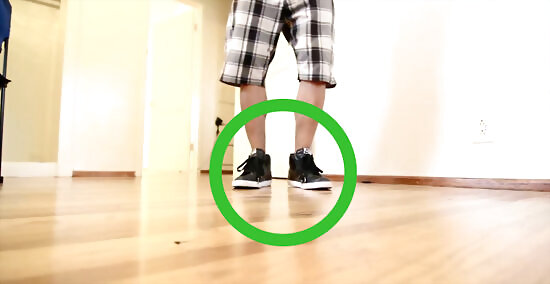
Hop to uncross your legs back to a a resting position. When in a resting position, your legs will be parallel and your feet ready to change directions.
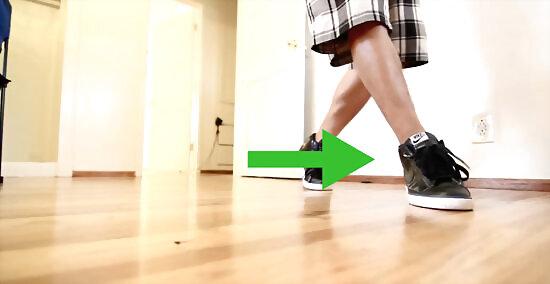
Cross your right leg over and in front of your left leg. Again, be sure to remain on your toes as you do so.
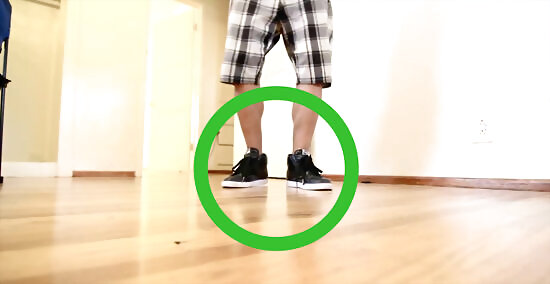
Jump back to the resting position once again. The key is to go with the rhythm of the music as you top rock, so each time you practice, the speed at which you top rock will depend on the beat of the song. Try to follow the rhythm of the baseline or the snare line.
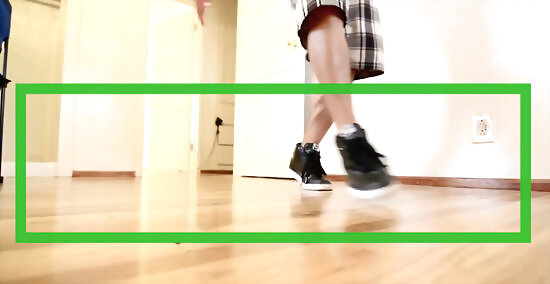
Repeat steps 2 through 4 for as long as you want to top-rock. These simple movements complete the toprock.
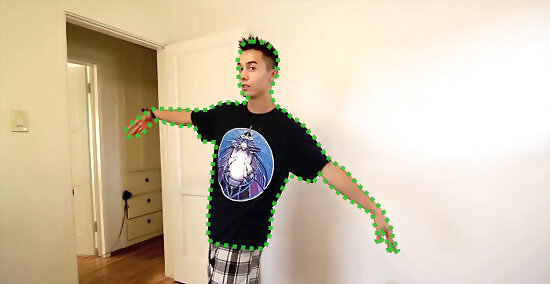
Incorporate hand motions. Once you've gotten the basic footwork down, you can let your hands swing with your body, but don't overdo it. Loosen up your arms and let them follow your feet. When you step forward, you can allow your arms to swing back behind you, and as you hop back to a resting position, let them swing back to the front of your body. The arm movements are really up to you, so groove to the music and let your body express itself. Practice in a mirror to check that you are not flailing your arms too much.
Master the 6-Step
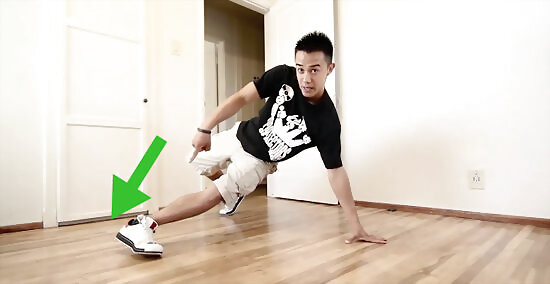
Start in a pushup position and bring the right leg forward. Extend it in front of your left foot. You should be balancing on the outside edge of your right shoe.
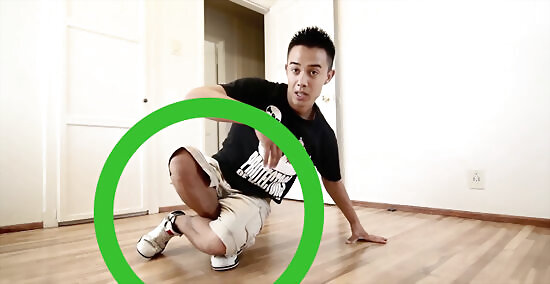
Take your left hand off of the floor and pull the left leg forward. It should be bent at a slightly larger angle than 90 degrees and should land at the back of your right leg so that your right leg is wrapped around your left. Keep your left hand in the air.
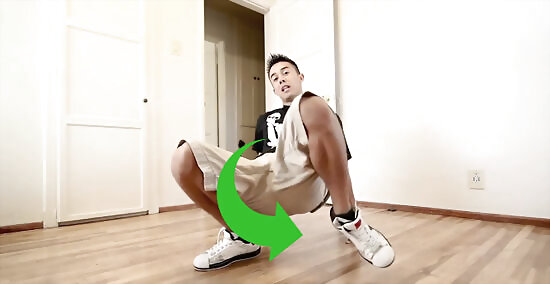
Release your right leg from around your left leg. Place your right foot about two feet from and parallel to your left foot.
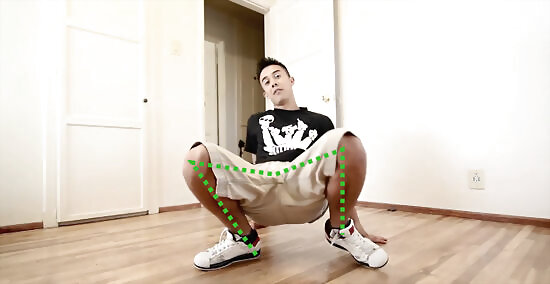
Put your left hand on the floor behind you. You are now in the "crab position."
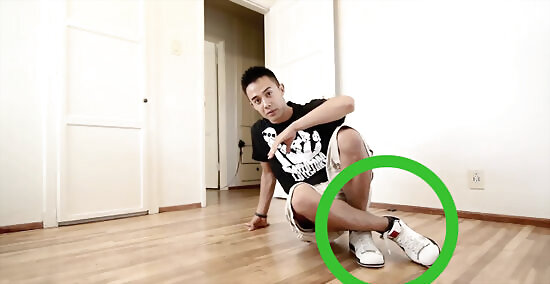
Bring your left leg around and wrap it around your bent right leg. You should be balancing on the outside edge of your left shoe. Lift your right hand up.
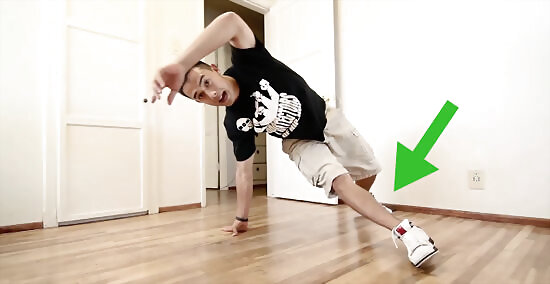
Swing your right leg behind you, keeping your right hand up.
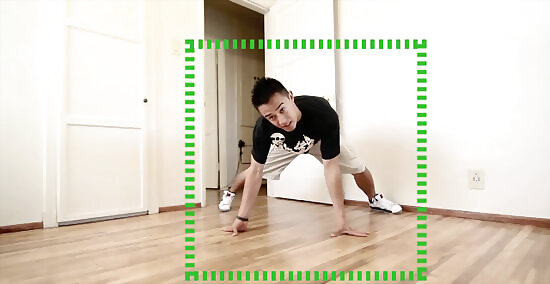
Extend your left leg back and ground your right hand. You should be back where you started, in a pushup position.
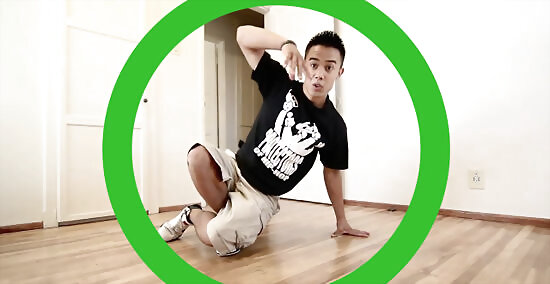
Practice this move until you can spin in a circle fluidly. This is the foundational step from which the rest of the breakdancing creativity stems.
Do a Drop
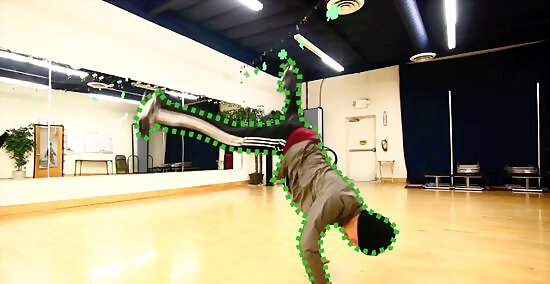
Transition to the floor with a coin drop. Twist your upper body with your arms tightly wound around yourself. Bend your upper body over until your arms hit the ground. Once your arms hit the ground, you can swing your feet up into the air and transition into other groundwork moves.
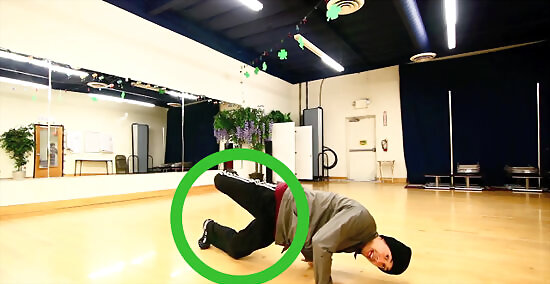
Nail a knee drop. Bend your left leg deeply and place your right leg behind it. Get ready to catch yourself as you fall forward, making the move look like you are actually falling down. Catch yourself with your hands and then allow your bent knee to hit the ground. You are now ready to move on to whatever groundwork you want.
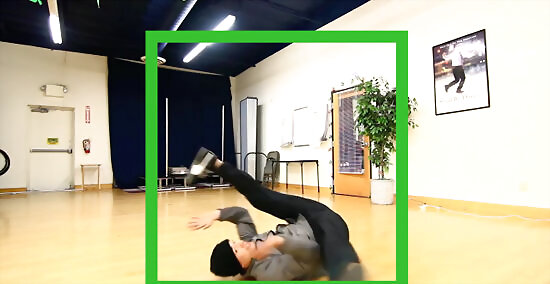
Build a backdrop or suicide. A backdrop, more commonly (and accurately) called a suicide, is a very advanced move that shouldn't be practiced until a person is comfortable with the basic elements of breakdancing. Put down a cushion of some sort such as a mattress to practice the suicide move and stand with your feet about two feet apart and your arms out in a T-shape straight out from your shoulders. Kick your right leg out in front of you then swing it back, simultaneously jumping forward with your left leg. Tuck your body in tight and essentially perform a front flip. Land on the middle part of your back and proceed to move into your groundwork. This move is often performed at the end of a sequence as well.
Learn a Power Move
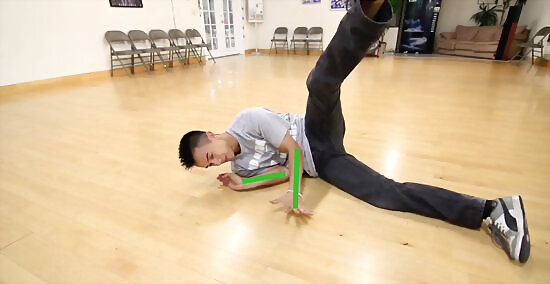
Throw in a windmill. Kneel on the ground with your left elbow tight against your side and your right arm bent at a right angle with your hand in front of your face. Place your hands on the ground and keep your left elbow tucked under your hip bone. You want your weight to be mostly distributed over your left forearm. Straighten out your legs behind you and hold your body weight with your left forearm. Raise your left leg up and bend your knee. Kick up your right leg, simultaneously swinging your left leg under your right leg. As you complete this move, push off the ground with your hands and roll over your left shoulder onto your upper back. Make sure your chin is tucked in toward your collar bone during this step to avoid injury. Return to your home position with your arms on the ground supporting your legs in the air. Now your hands will be on the right side of your body. Now complete the push off and leg swing on the other side of your body, swinging your left leg under your right and rolling over your right shoulder onto your upper back. Continue this transfer of momentum from left to right using your entire body, and you've completed a windmill power move!
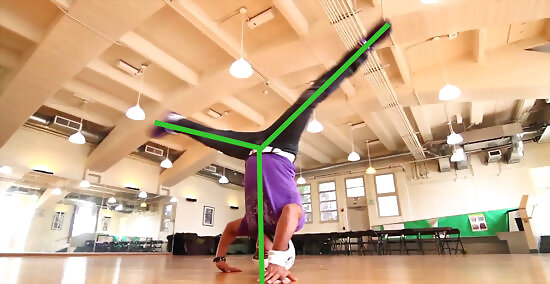
Learn to headspin. In order to perform a headspin move, you must first be able to hold a headstand for several minutes and move your legs around without falling over. Once you're able to perform these tasks, you're ready to try a headspin move. Put on a beanie or a bandana to aid your spinning motion. Cross your legs and alternate swinging them in a circular motion keeping your upper body in one place to get the feel of the movement. Keep your hands on the ground when just beginning to learn this move. When you're comfortable with that, begin to let your hands lift off the ground as your legs uncross to allow yourself to spin slowly. Be ready to return your hands to the ground and catch yourself if you need to. The wider you spread your legs, the more momentum you will gain, causing you to spin faster. Concentrate on keeping your back straight and your neck safe. If you start to feel neck pain, take a break immediately.
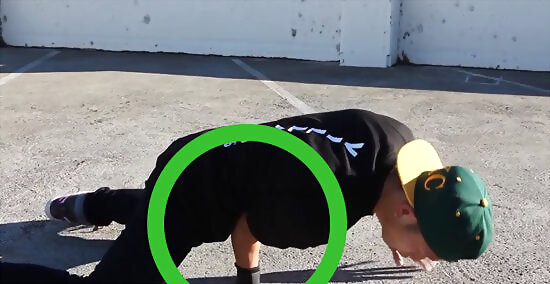
Show your strength with a jackhammer. If you have a strong core, you can learn the jackhammer, though it's not an easy move. Balance your body on your two bent arms, with your elbows hugged in at your hips and your feet flared out behind you. Then try to release one hand and spin on the other, using the free hand to aid you in your spinning. Once you can spin without difficulty, you can move on to the hop. Place both hands back down on the ground and incorporate small hops into your spin motion. You will now be rotating in a circle as you balance on two hands and hop slightly. Now take one hand off of the ground and push with it as you spin yourself with the other. Shift all of your weight over to the balancing hand and place your pushing hand behind your back. Bounce on one hand while spinning and you've completed the jack hammer! The jackhammer is an extremely hard move that takes a lot of strength, so don't be discouraged if this move takes months to get down.
Throw in a Freeze
Learn the basic baby freeze. Put your right hand on the ground on the left side of your body with your left leg outstretched. Bend your right knee. Bend your left elbow, tucking it in at your hip. Start to put all of your weight onto your hands and tilt your body on top of the platform you created with your two arms. Place the side of your head lightly on the ground so that it holds no weight. Lift up your legs and hold. This is the baby freeze position with one leg outstretched and the other bent. The baby freeze is an easy breakdancing move that beginners can quickly learn.
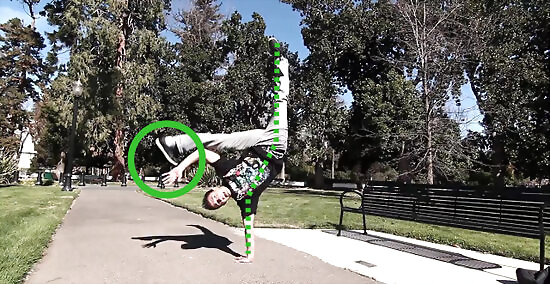
Nail a handstand freeze. Get into a basic handstand and first try bending your knees behind your back to get comfortable with the feeling. Once you feel steady, stand back up and this time jump into the handstand with momentum, landing only on one hand. Swing your free hand behind your back as you simultaneously bend your knees like you did to practice. Tap your toes with your free hand and return to a crouching position.
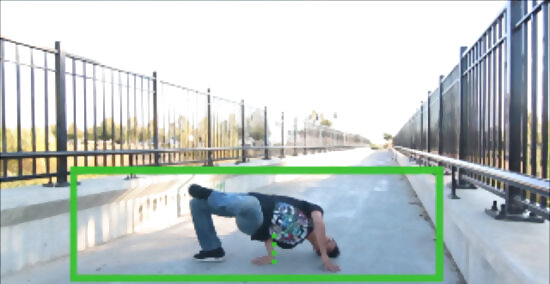
Try a chair freeze. Get into the baby freeze position, but instead of hugging your elbow into your hip, place your bent elbow behind your back and rest it on your hip bone. If you are using your right elbow, place your left hand on your hip and your left foot at a 90 degree angle on the ground so that your hips are square and pointing upward. Lift your right leg and rest your right ankle on top of your left knee, like you would to cross your legs in a chair.

















Comments
0 comment